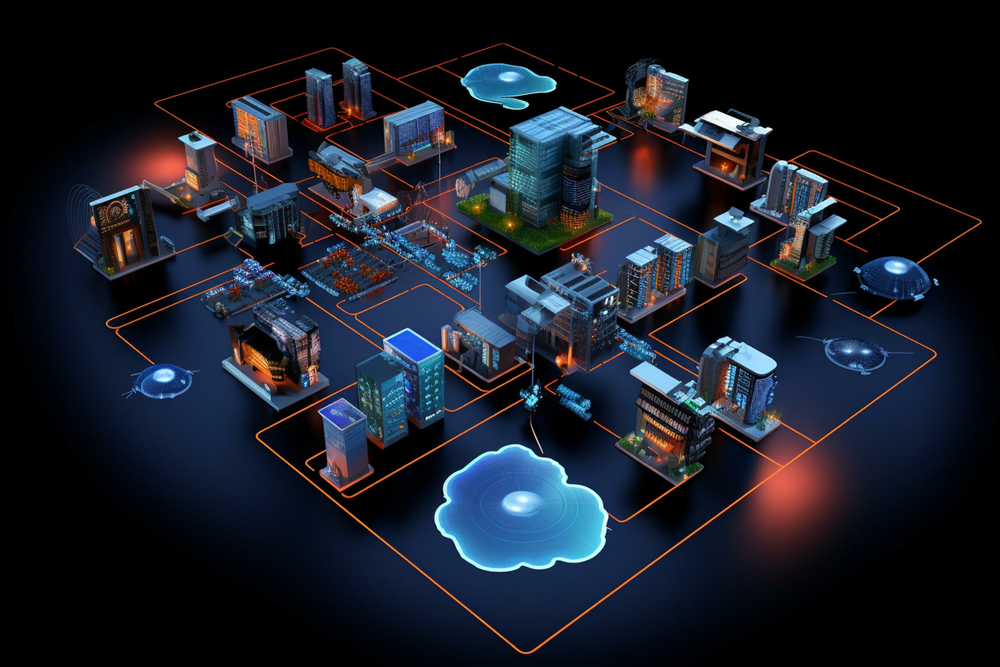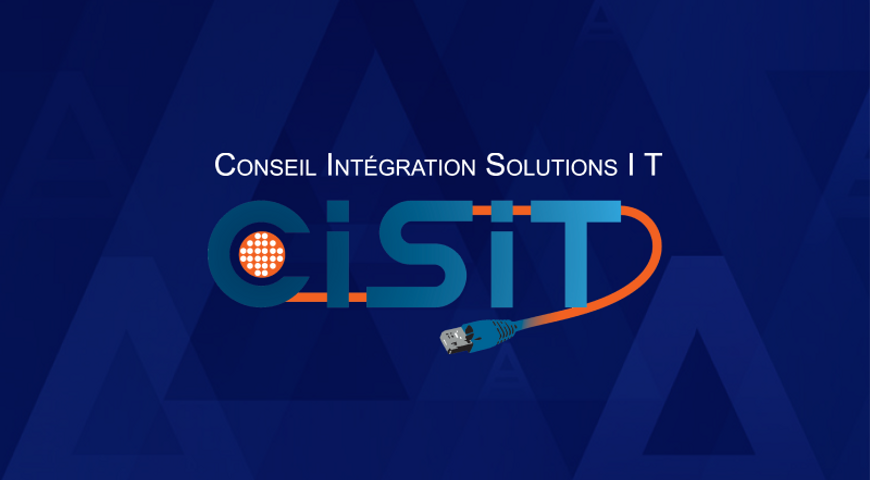
What is the difference? EDR vs MDR
The increasing frequency, sophistication, and financial impact of cyberattacks have emphasized the criticality of implementing a cybersecurity strategy. At the core of any security approach lies the necessity for a detection and attack response capability. This capability plays a role in identifying and countering threats that manage to evade security measures.
Endpoint detection and response (EDR) and managed detection and response (MDR) are two solutions aimed at enhancing an organization's security operations and measures through the adoption of security technologies and software agents. Despite their shared goal, EDR and MDR diverge in their areas of concentration and approaches to resolving security issues.
Understanding the disparities between EDR and MDR is crucial when determining the suitable solution for your business. Let's explore these differences further:
What is the difference between EDR and MDR?
When we compare EDR with MDR, it's important to understand the roles these security tools play in the cybersecurity realm. EDR stands for Endpoint Detection and Response, focusing on advanced detection and response to sophisticated threats that target our endpoint devices, and it offers insight into security incidents on devices. On the other hand, MDR, or Managed Detection and Response, takes a more holistic approach by blending technological methods, human knowledge, and proactive threat hunting to identify, analyze, and address security incidents across an organization's environment while protecting its sensitive data.
While EDR keeps an eye on endpoints and spots suspicious behavior that could signal a breach, MDR takes it up a notch by providing monitoring capabilities, conducting threat intelligence analysis, offering incident response support, and giving guidance on remediation. MDR services are particularly valuable for organizations lacking the resources or know-how to efficiently handle their cybersecurity operations.
While EDR plays a key role in ensuring visibility for endpoint security concerns, MDR presents a comprehensive strategy for detecting and responding to sophisticated cyber threats across an organization's infrastructure. The decision between EDR and MDR hinges on factors like the organization's size, industry regulations and compliance needs, and their level of cybersecurity maturity.
In today's landscape teeming with lurking cyber threats, both solutions play crucial roles in a robust cybersecurity strategy. EDR and MDR are frequently discussed in the realm of cybersecurity. What are they, truly? How do they differ? Let's explore in detail the realm of EDR versus MDR to grasp their pros and cons. Because it's essential to comprehend their roles in providing security for us. EDR, short for Endpoint Detection and Response, concentrates on monitoring and responding to security incidents on devices.
It offers insight into endpoint activities that aid organizations in detecting and effectively addressing threats. On the other hand, MDR (managed detection and response) goes beyond endpoint monitoring by leveraging a team of experts who actively surveil an organization's network for potential threats, analyze data from various sources, and respond swiftly to incidents as they occur. One benefit of EDR is its visibility into endpoint activities, which facilitates threat identification. Nonetheless, its primary drawback lies in requiring organizations to allocate resources for managing alerts and promptly responding to incidents at an early stage, before the attack has escalated.
MDR offers a more comprehensive approach by monitoring the network continuously. This proactive strategy helps organizations identify threats that traditional security methods and other security tools might miss. However, one drawback of MDR is its cost, as it demands skills and round-the-clock monitoring services. We can definitely say that both EDR and MDR are essential for improving an organization's cybersecurity defenses. While EDR provides endpoint visibility but requires management resources, MDR offers comprehensive network monitoring with expert assistance at a higher price point. Understanding the pros and cons of each option can assist organizations in making informed choices regarding their cybersecurity solutions.
The core focus of EDR and MDR
EDR solution: EDR solutions primarily revolve around monitoring and safeguarding endpoints like desktops, laptops, or servers. Their primary focus lies in detecting, investigating, and mitigating threats affecting these devices.
MDR: Managed detection and response solutions take a holistic approach by encompassing end-to-end security monitoring across an organization's entire network infrastructure. MDR services monitor networks, endpoints, cloud environments, and other relevant areas to identify and address threats.
EDR vs MDR - Security Operations
EDR tools and solutions typically empower security teams with tools to proactively detect threats, investigate incidents, and respond to attacks directly. This puts the onus on the organization's security personnel to generate insights from endpoint data and identify threats.
MDR: In contrast, managed detection and response services are often outsourced to third-party providers who possess advanced threat detection and hunting capabilities. They utilize security expertise, specialized tools, and analytics to monitor an organization's environment and offer incident response assistance.
Scalability of EDR vs MDR
EDR: Since EDR primarily operates at the endpoint level, it may prove manageable for small and medium-sized businesses with limited resources or straightforward network architectures.
MDR: Managed detection, endpoint monitoring, and response services excel in complex environments that encompass multiple endpoints, networks, cloud platforms, etc. Their scalability is advantageous for organizations requiring security coverage across diverse infrastructures.
Choosing the right solution for your business depends on factors such as the size of your organization, the complexity of your network, available resources, and budgetary considerations for implementing the right cybersecurity solution. Evaluating these aspects alongside the features of EDR and MDR will aid in making a decision about which solution aligns best with your organization's network and security objectives.
Remember, seeking expert advice from security professionals or consulting vendors also plays a role in selecting the right solution tailored to your specific business requirements and needs.
In this context, we will now delve into three main tools for detection and response:
EDR by definition
EDR solutions play a role in bolstering by offering advanced capabilities for threat prevention, detection, analysis, and response. The overarching goal of the in-house expertise of EDR is to consolidate layers of security measures into a solution.
The effectiveness of EDR lies in its ability to enhance threat detection by leveraging endpoint visibility. By gaining increased insight into endpoints potential, advanced threats can be efficiently identified.
Key features and functionalities of EDR solutions
- Endpoint Protection: As organizations increasingly embrace work and adopt bring your own device (BYOD) policies, endpoints become crucial in combating cyber threats. EDR solutions ensure detection and response capabilities are in place for these endpoints in order to scale organization's security posture.
- Log Aggregation: EDR solutions have the capability to access and aggregate system and application logs generated by endpoints. By consolidating data from different sources, a holistic view of the endpoint's state can be established.
- Machine Learning: EDR solutions incorporate machine learning capabilities that analyze data collected from log files and other relevant sources. This analysis enables the system to identify and alert for anomalies and patterns that may indicate breaches or other endpoint-related issues.
- Analyst Support: EDR solutions amass an amount of data about an endpoint's status, which is then aggregated and analyzed to extract insights.
By emphasizing the role EDR plays in fortifying endpoint security and highlighting its core functionalities, we can present the information in a manner more aligned with human writing style while maintaining its technical essence. Ultimately, EDR (Endpoint Detection and Response) proves to be an efficient approach to safeguarding endpoints against cyber threats and providing robust malware protection for your PC's and mobile devices.
MDR by Definition
MDR represents a security as a service proposition aiming to assist organizations in replacing or expanding their internal security operations center (SOC) through a third-party service. By offering a solution, MDR equips organizations with the tools, personnel, and expertise to effectively shield themselves against cyber threats.
Key features and functionalities of MDR
Continuous Monitoring: Given that cyberattacks can strike at any moment, uninterrupted surveillance is crucial. MDR providers diligently monitor an organization's environment for security issues, promptly assessing alerts to determine if they indicate a threat and responding if they do.
Managed Incident Response: Swift and accurate incident response plays a role in mitigating the scale and impact of cybersecurity incidents. MDR providers boast trained incident response and security teams that can promptly address security incidents with knowledge and proficiency.
Specialized Expertise: The cybersecurity industry is grappling with a scarcity of professionals, making it challenging to acquire and retain critical security expertise. This scarcity is more pronounced in fields like cloud security and malware analysis. An MDR provider possesses the scale to attract and retain experts, guaranteeing their availability and access to customers whenever required.
Proactively engaging in threat hunting activities allows organizations to discover intrusions that were previously unknown within their IT environments. This proactiveness is an aspect of an MDR provider's services that enables them to offer protection compared to purely reactive security measures. At its core component and essence, MDR equips companies with all the elements required to safeguard themselves against the changing cyber threat landscape.
MDR (Managed Detection and Response) vs. EDR (Endpoint Detection and Response)
Let's explore and understand even more clearly the differences between EDR and MDR.
MDR and EDR serve the purpose of enhancing an organization's cybersecurity defenses by utilizing cutting-edge security solutions providing robust endpoint security. While both offer improved visibility and security integration, they differ significantly in their approaches. EDR focuses on safeguarding endpoints with tools, whereas MDR delivers comprehensive security monitoring, management and threat response across an organization's entire IT infrastructure.
It is worth noting that an MDR provider may incorporate EDR solutions within their offerings, and the choice between MDR and EDR is not mutually exclusive. Companies are advised to adopt the solutions pertinent to their security needs, often necessitating the use of both an EDR and an MDR solution concurrently.
Threat Detection and Selecting the Endpoint Security Solution for Your Business
MDR and EDR are both intended to enhance an organization's security readiness and address security challenges. However, they tackle problems, making them suitable for their purposes. MDR presents a solution to the scarcity of cybersecurity personnel, while EDR provides invaluable visibility and management capabilities for corporate endpoints.
Incorporating both MDR and EDR into a cybersecurity strategy is highly recommended for every organization. Check Point offers a portfolio encompassing both EDR solutions and MDR services to cater to these requirements.
Adoption of EDR solutions
The adoption of EDR is expected to grow in the coming years. Based on the findings of Statistics MRC's Endpoint Detection and Response: Global Market Outlook (2017–2026), it is estimated that sales of EDR solutions and security posture, including both on-premises and cloud-based options, will reach $7.27 billion by 2026. This projection indicates a growth rate of nearly 26%.
Among the factors fueling the increasing adoption of EDR, one notable aspect is the rising number of endpoints connected to networks. Additionally, the escalating sophistication of cyberattacks plays a role in driving demand for EDR solutions. Cybercriminals often target endpoints as they are perceived as points of entry to infiltrate a network by using the network traffic data.
New EDR capabilities improve threat intelligence.
The expanding features and services of EDR solutions are enhancing their ability to detect and investigate threats effectively.
One valuable addition is the integration of threat intelligence services, which provide organizations with a repository of up-to-date information on existing threats and their attributes. This collective intelligence significantly bolsters an EDR's capacity to identify intricate and previously unknown attacks. As part of their endpoint security solutions, numerous EDR security vendors now offer subscriptions to threat intelligence services.
Moreover, some EDR solutions have embraced siloed security tools capabilities that leverage AI and machine learning technologies. These innovative systems and functionalities automate steps in the process. By learning an organization's behaviors and combining this knowledge with an array of threat intelligence sources, these capabilities can interpret findings more accurately and efficiently. The one thing that is missing in EDR the comprehensive detection capabilities, which can be found in extended detection and response solutions.
Another noteworthy example of threat intelligence is the Adversarial Tactics, Techniques, and Common Knowledge (ATT&CK) project at MITRE's team, a nonprofit research group collaborating with the U.S. Government. ATT&CK operates as a knowledge base and behavioral analysis framework developed through the analysis of millions of real-world cyberattacks.
What challenges can MDR address?
- A Complex and Evolving Threat Landscape Staying abreast of this changing landscape necessitates adaptation and enhancement of threat detection strategies, diligent observance, and prompt reaction to all security events, incidents, and suspicious activities. These responsibilities place added pressure on an organization's resources and staff.
- Increasing Attack Surface: With the pace of transformation, businesses are embracing various technologies, like cloud computing, SaaS applications, IoT devices, remote/hybrid work setups, and mobile solutions. These technological advancements aim to improve productivity and enhance customer experiences. However, this expansive digital landscape also presents a challenge in terms of cybersecurity.
- Lack of Skilled Personnel: Based on research conducted by (ISC)2, it has been determined that there is an estimated shortage of 4 million professionals in the cyber security workforce. This significant scarcity of individuals poses challenges for organizations as they struggle to locate and retain personnel capable of efficiently identifying and addressing potential threats. Moreover, the demand for cyber security professionals and experts remains exceptionally high, which often results in high turnover rates and the requirement for organizations to train new employees in their threat detection and response protocols.
How to Choose an MDR Service?
There are Managed Detection and Response (MDR) vendors available, making it challenging to select one. To assist medium businesses (SMBs) in narrowing down their options, it is essential to ask the following essential questions when considering MDR services:
- What is the extent of their threat detection and response capabilities?
- Do they incorporate threat enrichment through Security Information and Event Management systems (SIEM)?
- How straightforward is the deployment and onboarding process for Endpoint Detection and Response (EDR)?
- Do they possess expertise in proactive threat hunting and managed response?
- What communication channels do they use? Do they provide reporting?
Acronis EDR Solution
In the face of the constantly increasing number of advanced cyberthreats driven by AI, users and business owners require robust and reliable security protection that is able to monitor, identify, protect, detect, and respond to these advanced persistent threats. If things have already escalated, they should also be able to recover and restore endpoints to their previous healthy condition before the attack occurs. Because, as we know, nowadays threats have the ability to spread and wreak havoc extremely fast.
Acronis, as an industry leader in cyber protection, acknowledges these concerns and has created a cure for them, which is named Advanced Security + Endpoint Detection and Response (EDR). This is the most complete protection that you can provide yourself with because it combines antivirus software and security tools, advanced EDR solutions, and cloud services for backup and recovery. This is end-to-end protection for every single device, providing you with the best possible defense against all unknown and known threats that are stalking us around the corner and waiting for the right moment to strike. Thankfully, our product is capable of minimizing this risk almost to zero, providing you with peace of mind that no matter what happens, you won't be affected.
Acronis Advanced Security + EDR unites backup and next-generation, AI-based anti-malware, antivirus, and endpoint protection management in one solution. Automation and integration provide you with unmatched ease of service, which leads to decreased operating costs and increased productivity. Furthermore, we are leaders in the G2 Quadrant, meaning that the best option you can make for you and your business is to choose our product because it is a mile ahead of our competitors products. By choosing us, you will position yourself a step ahead of every known and unknown cyber threat.
Acronis MDR Solution
We all want the best security strategy for our organization that is capable of intercepting every cyberthreat that can affect business continuity and normal operations. Because, as we know, this is the key to having a successful business that is able to function normally 24/7. If something unexpected occurs and causes a downtime, this will result in financial losses. Which, of course, no business owner wants to experience. Acronis MDR Solutions is the tool that is able to provide MSPs and businesses with unmatched business resilience.

Acronis MDR is a simplified, continuous endpoint security service designed to optimize your resource allocation from a highly extensible platform built to scale, add compelling services, and grow revenues from new and existing customer opportunities.
Acronis MDR will provide you with continuous monitoring of every single endpoint you or your clients have. Thus, you will have peace of mind knowing a world-class outsourced SOC monitors your endpoints constantly, 24/7/365, in order to identify and mitigate threats before they escalate.
Furthermore, expedited investigations by security analysts will always take care of every single threat that you are facing in real-time. Each incident will be investigated, prioritizing critical ones, using rich telemetry, threat intelligence, and deep forensic insights. Thus, these incidents will be categorized and intercepted by priority, ensuring your business continuity and uninterrupted processes.
You will also benefit from our top-tier security operations center (SOC), which handles and ranks security incidents in time, provides analysis, offers immediate response service that can be outsourced completely, and delivers ongoing reports to you. Another crucial benefit that you will be provided with is integrated recovery, which ensures unmatched business resilience for you and your clients. You will have the opportunity to take advantage of integrated remediation and restoration, either delivered through Acronis MDR or with a single click via our unified cyber protection platform.
By choosing our product, you will be able to enhance your cost of ownership by 60% by combining your cybersecurity, data protection, and endpoint management services under one integrated, multi-tenant, SaaS-based platform, on top of which the MDR service is delivered. Furthermore, you will have the option to choose between two tiers of our MDR service plan, allowing greater flexibility based on your and your clients requirements. The two options you can choose are "Protect, Contain, and Prioritize (Protection)" and "Protect, Respond, and Recover (Protection Plus)".
Thus, you can choose which plan best fits your needs and meets your requirements and budget. Our mission is not only to deliver the perfect service product but also to fulfill our clients expectations. So if you want to become part of the Acronis family, choose our product because we take care of our customers like they are our family members, so don't hesitate a second longer and contact us. We guarantee you won't regret it.
About Acronis
A Swiss company founded in Singapore in 2003, Acronis has 15 offices worldwide and employees in 50+ countries. Acronis Cyber Protect Cloud is available in 26 languages in 150 countries and is used by over 21,000 service providers to protect over 750,000 businesses.



